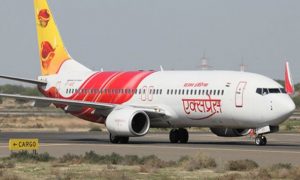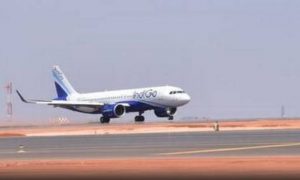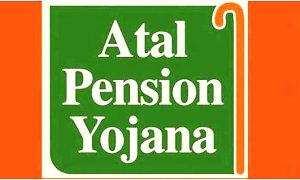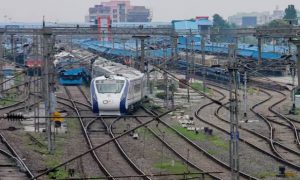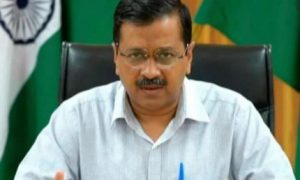The Delhi-Mumbai-Delhi route is the busiest air route in India. It has often featured amongst the top busiest routes in the world. However, a congested Mumbai airport and focus on expanding connectivity meant that at some point, the expansion of Delhi-Mumbai-Delhi frequencies came to a stop. Airlines, wherever possible, started increasing capacity by deploying aircraft with more seats. This meant that frequencies by IndiGo are now operated by the A321neo, while Air India deploys its widebody B777 and B787 aircraft on a few frequencies.
Data shared by Cirium, an aviation analytics company, exclusively for this article shows that there are 22,854 weekly departures for a standard week next month. These are across 1,126 sectors in the country.
How many flights?
There are an average of 55 daily flights between Delhi and Mumbai and vice versa, per day. Six airlines operate on this route. Overall, the route has 384 scheduled flights per week, each way.
This makes it the busiest route in the country, by frequencies as well as seats deployed. There are approximately 10,860 seats deployed between the two cities each way, daily. In terms of frequencies, Delhi-Mumbai has 46 per cent more frequencies than Delhi-Bengaluru, the second busiest route in the country, while it sees a 41 per cent lead in terms of seats over Delhi-Bengaluru.
Who leads the market?
IndiGo operates 135 weekly flights between the two cities, each way. This makes it the largest carrier on the route, cornering a 35 per cent frequency share, while it has 40 per cent seat share. The seat share is higher because IndiGo operates all-economy aircraft, compared to full service carriers who have a lower number of seats per departure.
Vistara has the second highest presence on the route with 30 per cent of frequency share, while Air India comes in third with 21.6 per cent frequency share. They operate 117 and 83 weekly flights each way, respectively.
Also Read : Pitru Paksha Special Train Between Rani Kamalapati – Gaya; Check Route Here
The dynamics are all set to change in November. On November 12, as Vistara changes to Air India, the latter will have 200 weekly departures each way, relegating IndiGo to second spot and have a clear lead in terms of frequencies and seats on offer. Two days later, on November 14, IndiGo will launch its new class of service IndiGoStretch, its business class offering which will try to poach premium passengers from Air India.
Which are the busiest times?
For flights to Delhi from Mumbai, the busiest times are between 0700 hours and 0759 hours, when there are five departures. Likewise, in the evening between 1900 and 1959 hours, there are five departures. Interestingly, at 1900 hours, there are three departures to Delhi, one each by IndiGo, Air India and Akasa Air.
For flights to Mumbai, from Delhi, there are three such hour bands when there are no flights. Between midnight and 0145 hours, there is no departure for Mumbai; likewise there are no flights between 1300 hours and 1400 hours and 0300 hours and 0400 hours. There are five departures each between 1900 and 2000 hours and 2000 and 2100 hours.
Also Read : DigiYatra facility launched at Visakhapatnam, Patna and seven other airports – Check full list here
On the hour departures
Air India has had a legacy of having on-the-hour departures between the two metros. Currently, Air India has departures at 0700, 0800, 0900, 1000, 1600, 1800, 1900 and 2100 to Delhi from Mumbai. IndiGo is catching up with five such departures between Mumbai and Delhi.
On the Delhi-Mumbai route, IndiGo has eight hourly departures with one from 0500 to 1000 hours and then at 2000 and 2100 in the evening. Air India has six such departures.
Fancy a widebody service on domestic routes?
Air India, typically operates two out of its total 12 frequencies with widebody aircraft, with one scheduled to be on the B777-300ER and another on 787 Dreamliner. If a passenger fancies being on widebody aircraft, for a short domestic sector – this is the sector to be on. What more? There also are opportunities to get down from the right hand door, if the aircraft is scheduled to fly international after the domestic leg, since the deplaning is done via stairs and aerobridge attached later to ensure sterility of the aircraft along with custom checks.
Also Read : Night Operations at Indore Airport To Be Closed for a Year. Know Why
What next?
Both Mumbai and Delhi will see new airports coming up next year. Navi Mumbai and Noida International Airport at Jewar will see a sudden spurt in capacity being available and city pairs which will include Navi Mumbai-Delhi, Navi Mumbai-Noida and vice versa. This will change the dynamics further. Will IndiGo try and take the lead in the overall market? The airline will be nine frequencies short of a combined Air India and 10 short of Tata group of airlines.
Interestingly, in seven out of top 10 sectors within India, IndiGo will continue to maintain the lead in frequencies even after Vistara’s merger with Air India. The only thing that can then stop IndiGo or Air India is supply chain constraints.


